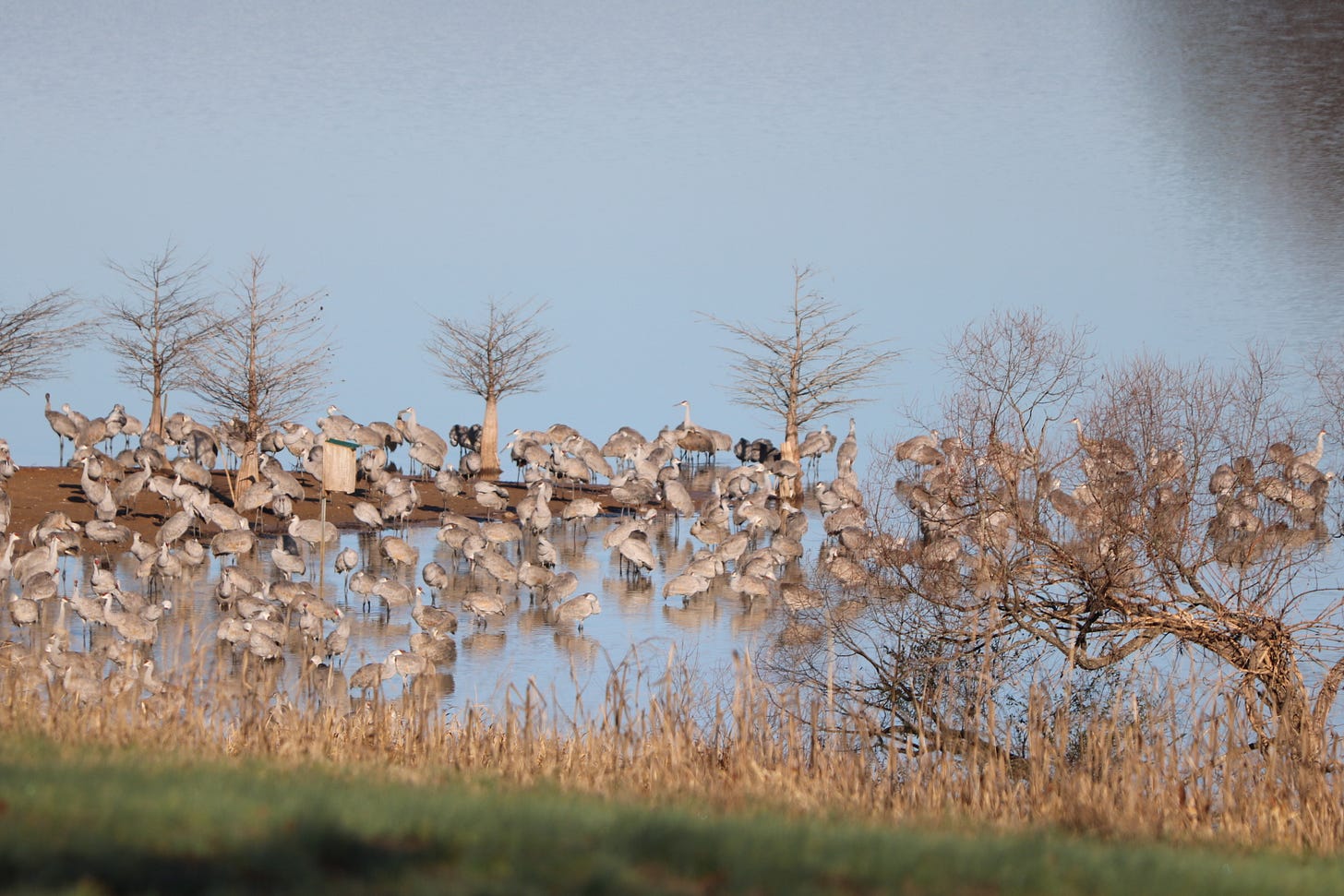Birds at Hiwassee Refuge
Birds at Hiwassee: A Haibun Travel Journal, Modeled on the travel journals of Matsuo Basho. Though some remain here for the winter, many greater sandhill cranes are transients in Tennessee, caught between summer nests in Wisconsin and wintering grounds in Florida. Their rattling call is a trumpet in the skies. They gather at their staging area near Birchwood and call me to watch flights and arrivals. In January of 2016, three friends and I traveled to Hiwassee Refuge to see the red-headed dancers proclaim a restless domain on the shore, gray wings jostling like aggressive shoppers on Black Friday. I had been here many times before, but freezing air bit my nose and cheeks on this day. It sent needles through my gloves. The warm air and tang of barbecue revived me at the program hall. This fundraiser for the community center is always a part of the annual Crane Festival. Cranes line the windy shore. Lift and call across cold water. Homeward then, we fly. Although there were many cranes, we also saw great blue herons. Herons are not close relatives of cranes, but even casual birdwatchers can differentiate them. Cranes have short beaks and will happily make a meal of corn augmented with frogs, mice, and other marshland creatures. Herons do not eat vegetative matter like cranes, but a snake makes a tasty meal. During their courtship ritual, I once saw a heron offer a writhing snake to another. It was readily accepted. On this day, the herons stood as still as dead trees, snags in the water, hunting fish and frogs. Breathe through water gills. Swim beneath the glassy surface. Gone to striking beak. I once stood on this same spot and watched a male harrier (Marsh Hawk) work the far shore of this inlet off the Tennessee River where cranes now stand. Years ago, I became familiar with harriers on Cape Cod. I made sense of my observations with the assistance of the book Harrier: Hawk of the Marshes by Frances Hamerstrom. It was number 6 in the Smithsonian Nature Series. Though out of print, it is available from used book dealers. Female harriers are brown, but the one I saw this day was a gray male. Both genders have a distinctive white rump patch. Gray wings glide low. Lift for each patch of brush. Death to grasshoppers. As crane watching continued at the refuge, we adjourned to Birchwood School, where some wildlife specialists gave a program on preserving birds of prey. They had non-releasable birds of several species, including a bald eagle. I have watched bald eagles at the refuges, usually circling high above. They did not dive for fish in front of the audience as eagles do in nature documentaries. On at least one occasion, a golden eagle appeared. Golden eagles hunt rabbits, squirrels, and other small mammals, unlike their fish-eating cousins. Both species scavenge carcasses, and bald eagles are noted for stealing fish from hard-working ospreys. Circle over pond Dive for fish or hunt wounded prey. King of Sky and Sea I have made several trips here. I hope to return each year that I am still alive. We saw a group of white pelicans far out on the Hiwassee River from the overlook at the Cherokee Removal Memorial. Next to their brown cousins, the white pelicans are gigantic. Historically, these river pelicans wintered in Florida and passed through Tennessee, especially the western part of the state, on migration. A flock of them has now stays near Hiwassee Refuge for the winter. Winter in Florida Stopping off at Hiwassee Bound for Yellowstone River Pelicans arrive Move westward to build nests
I wrote this journal several years ago and published it as a broadside. It includes four haiku and a tanka. I took the photo of Cranes with a Canon EOS Rebel t6i Digital Single Lens Reflex Camera.




